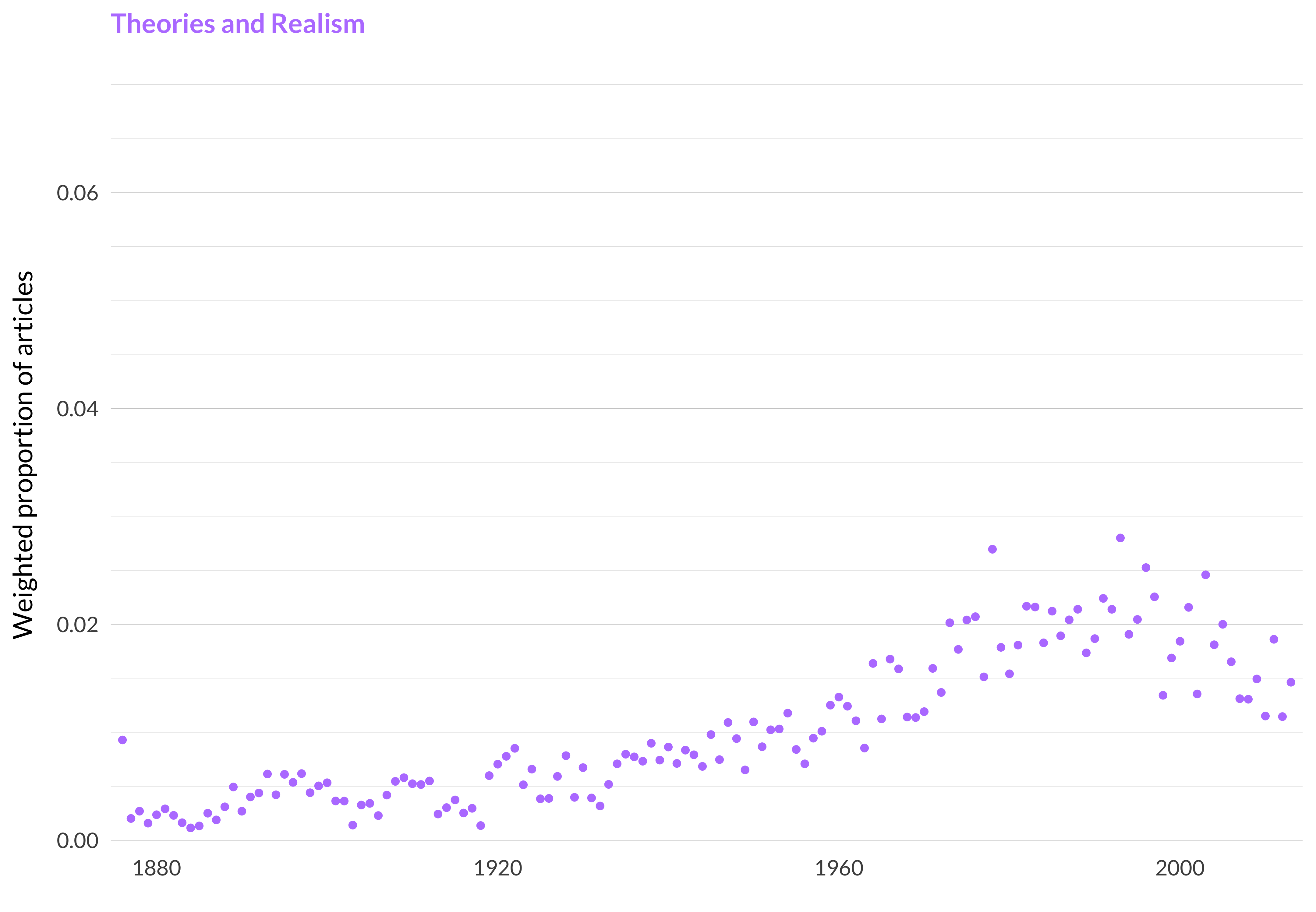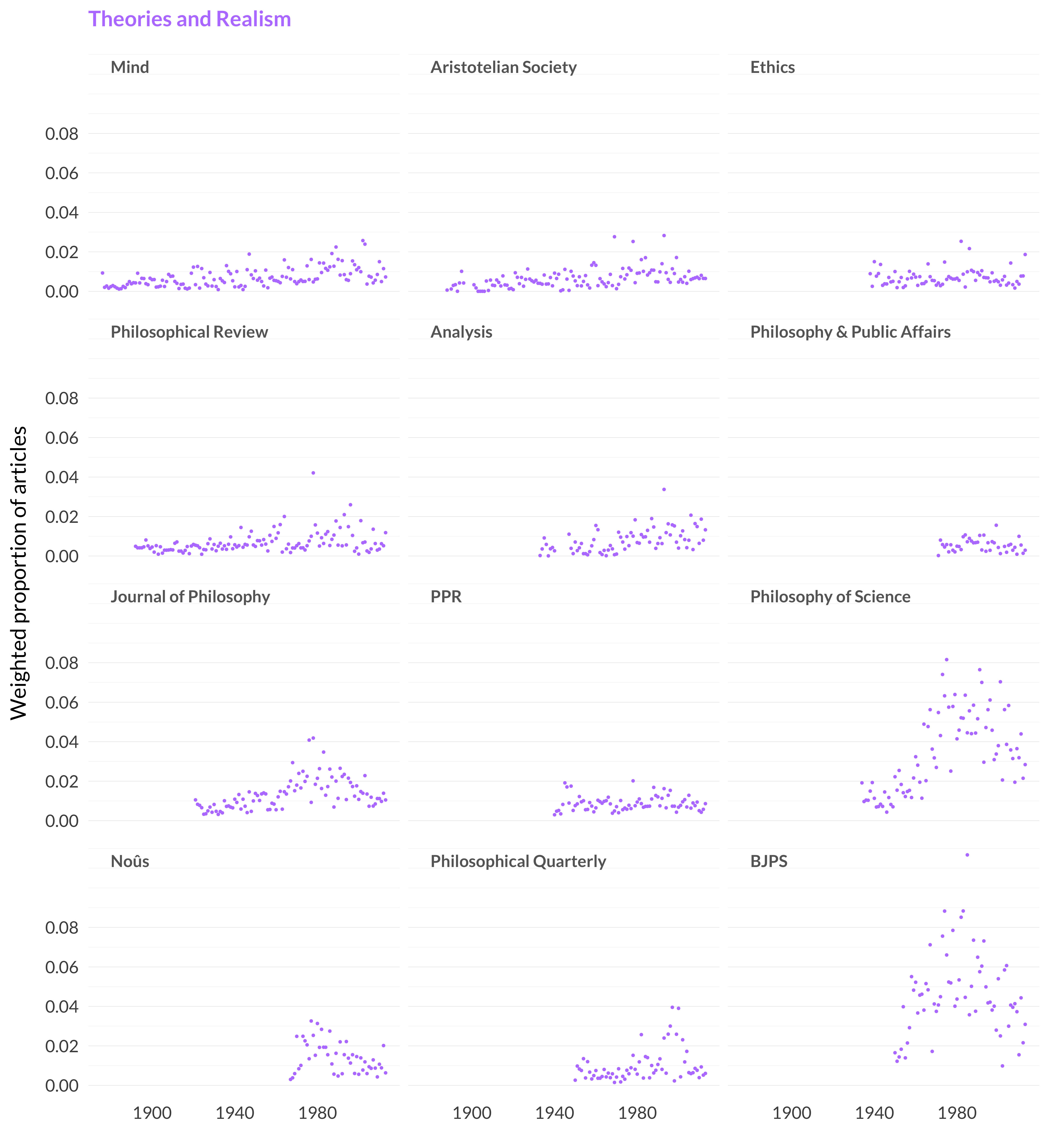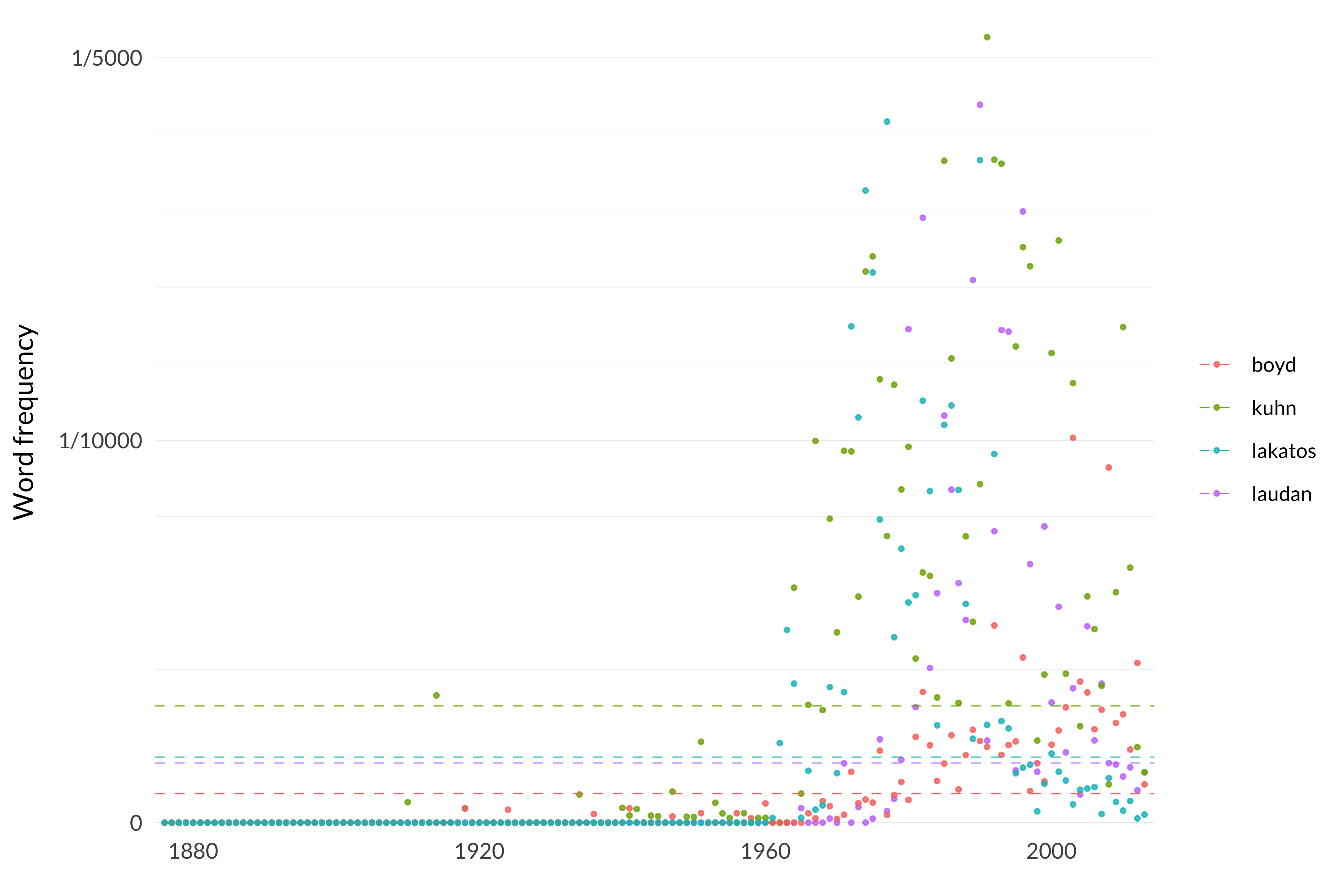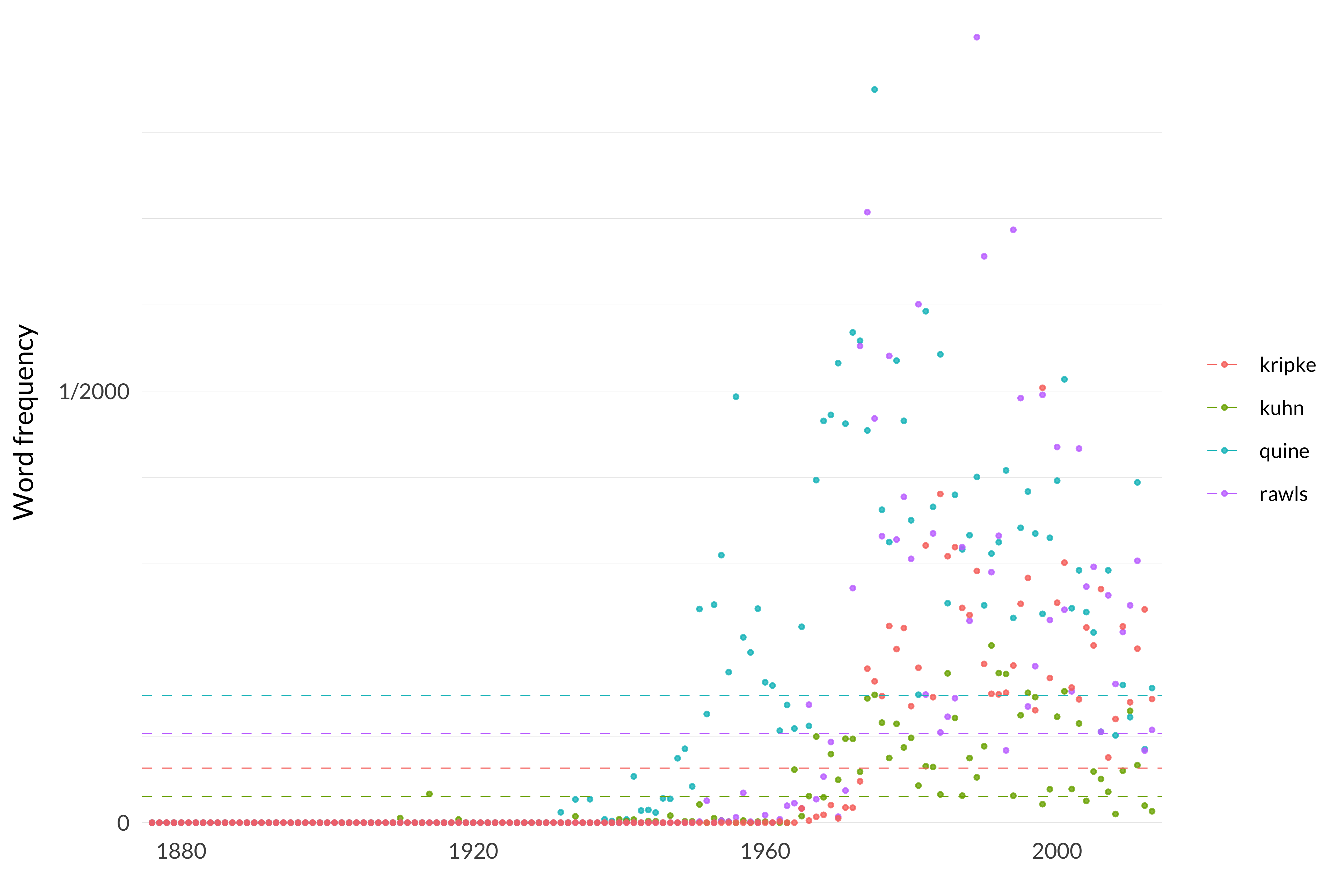2.67 Theories and Realism
Category: Philosophy of Science
Keywords: theories, kuhn, fraassen, observational, theoretical, theory, adequacy, constructive, observable, empirically, van, ramsey, paradigm, successful, simplicity
Number of Articles: 312
Percentage of Total: 1%
Rank: 46th
Weighted Number of Articles: 454.4
Percentage of Total: 1.4%
Rank: 17th
Mean Publication Year: 1987
Weighted Mean Publication Year: 1979.5
Median Publication Year: 1989
Modal Publication Year: 1993
Topic with Most Overlap: Methodology of Science (0.0586)
Topic this Overlaps Most With: Chemistry (0.0376)
Topic with Least Overlap: Crime and Punishment (0.00015)
Topic this Overlaps Least With: Frankfurt Cases (0.00224)

Figure 2.155: Theories and realism.

Figure 2.156: Theories and realism articles in each journal.
Comments
This study matches up with my experiences surpisingly well. When I was a grad student back in the 1990s, I felt that work on scientific realism was all around. This was in part because I was reading a lot of philosophy of economics, but it also felt like part of the background that everyone should know about. Since then it had seemed less and less relevant to what was going on around me. I had always thought this said more about the changes in my environment than in philosophy at large. I assumed, that is, that there were still just as many discussions about scientific realism going on, but changes in my reading habits meant I wasn’t seeing them as much.
Nope! This topic really has fallen away quite a bit from the 1990s. Or, at least, it has really fallen away in these twelve journals. I expect a study that covered a broader range of journals would tell a different story. But scientific realism has become a smaller topic in the twelve journals I’m looking at.
One doesn’t need a fancy model to see this. It can be seen in the raw word counts. This is helpful because it lets us cross test the output of the fancy model. It’s not helpful to look at how often the word realism is used, since this has so many different meanings. But we can look at some of the names most associated with this debate to get a sense of how often the debate was taking place in the pages of these journals.13

Figure 2.157: Word frequency for four famous names in philosophy of science.
There is a lot of year-to-year variation there, but the basic pattern that things rise pretty quickly through the 1980s, and then fall away just as quickly after that, seems fairly clear. In the 1990s when I was reading this stuff, it was a debate running out of steam.
As one other aside, I’m surprised that the raw counts for Kuhn and Boyd are so low. For one thing, those names belong to more people than their most famous owners. For another I thought Boyd might have more of a boost from being at Cornell, even in the Philosophical Review. For another, Kuhn is much lower than other similarly famous figures of the third quarter of the twentieth century.

Figure 2.158: Word frequency for names of four famous philosophers.
There are years when the word Rawls is being used about once every thousand words. Even accounting for the stop words JSTOR excludes, that’s once every two to three pages over all twelve journals! But Kuhn only once gets above once every five thousand words, and then only barely.
Note that the Y-axis measures the frequency of the words across all words in the JSTOR dataset, not just amongst the words that I’m including. So the denominator here includes the stop words, the LaTeX words, the bibliographic words, etc. This will be true whenever I do one of these graphs throughout the book.↩︎